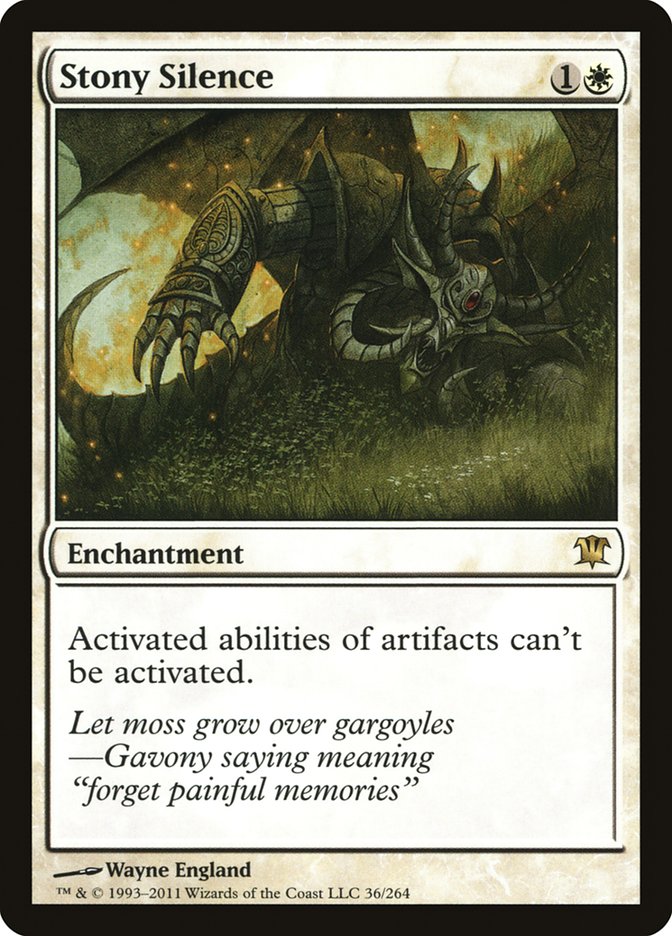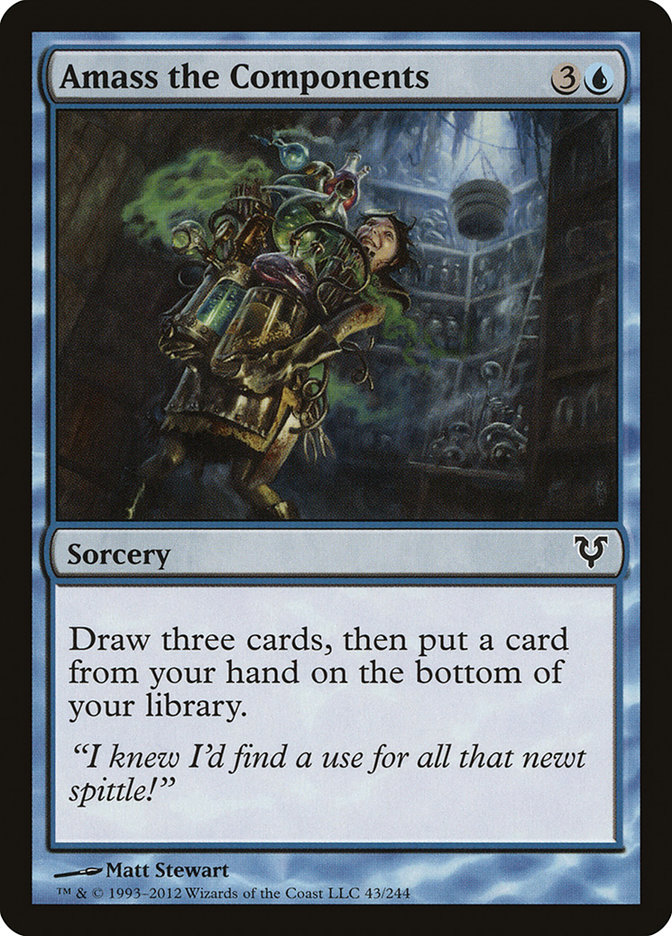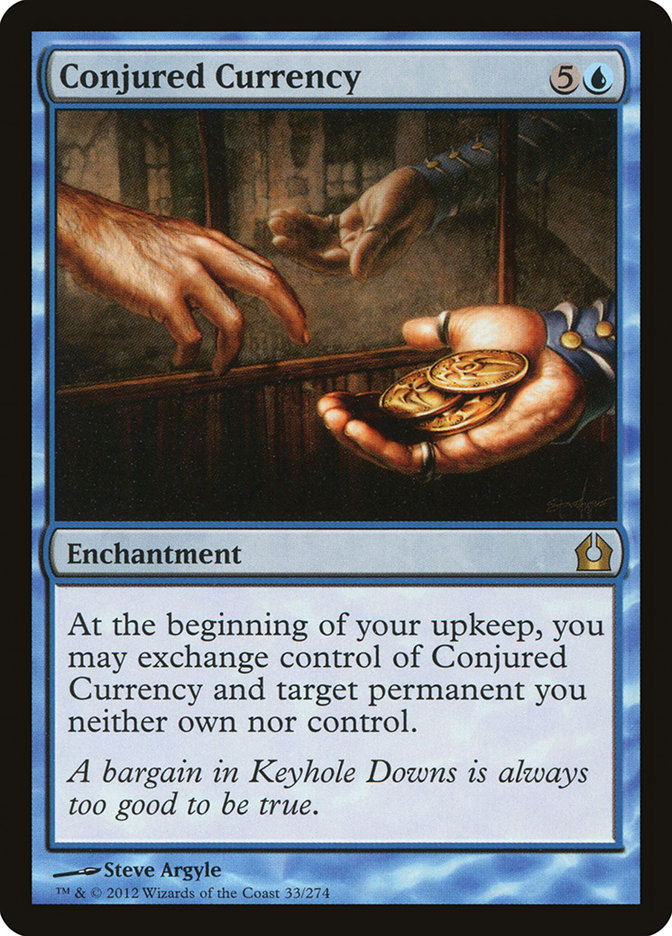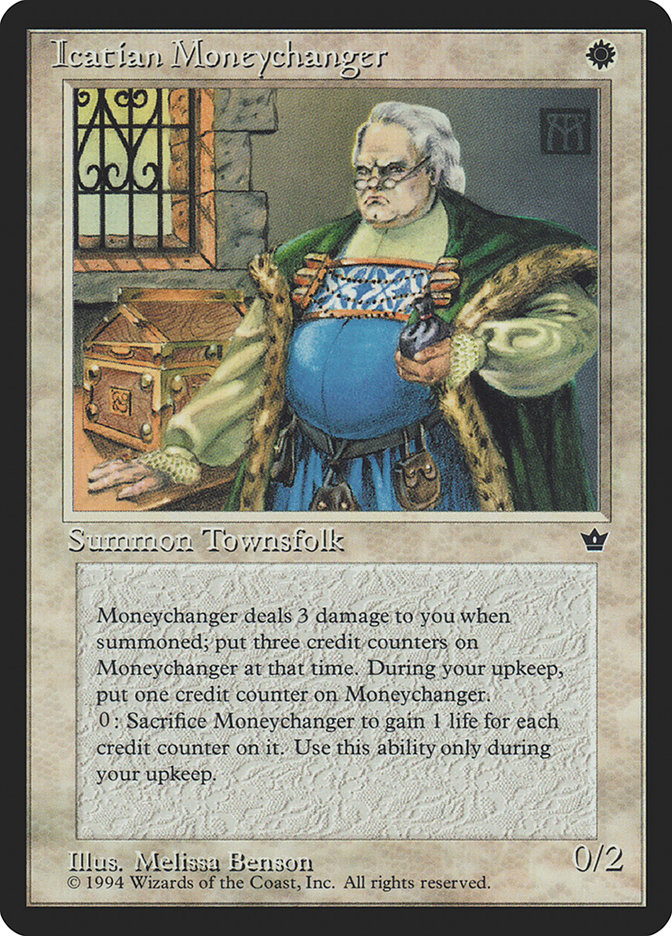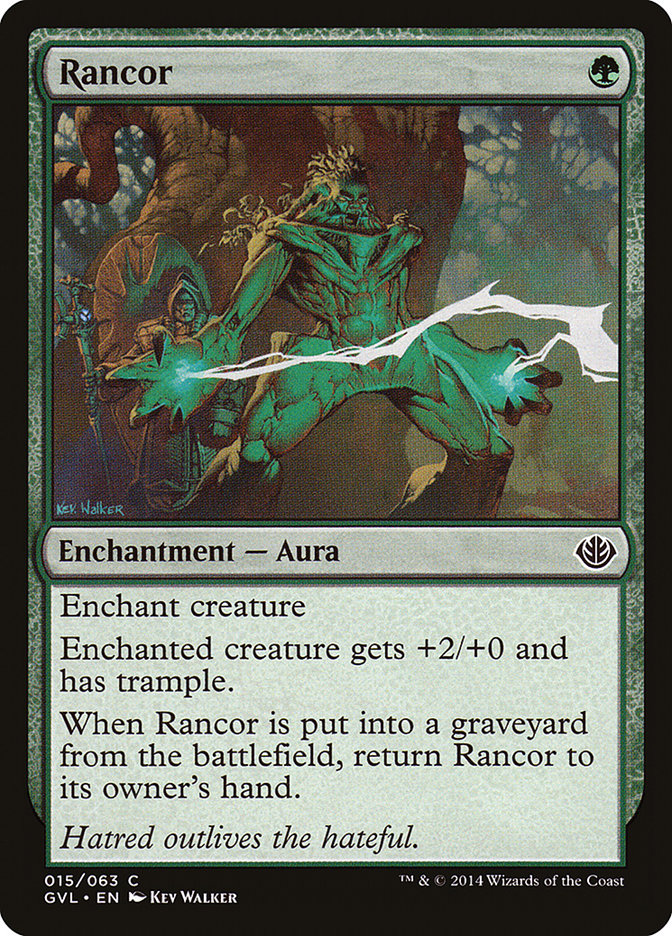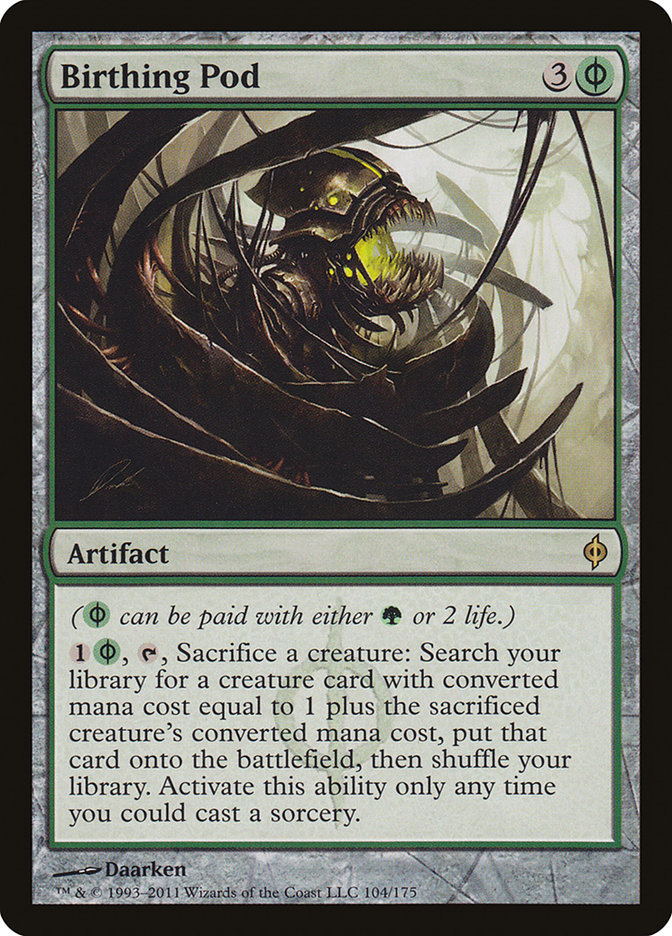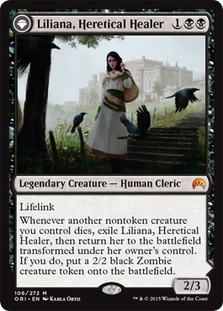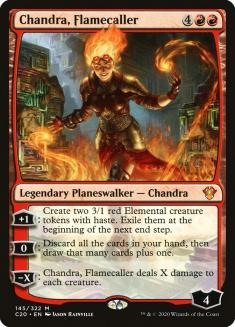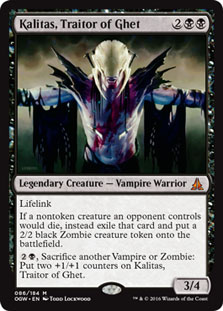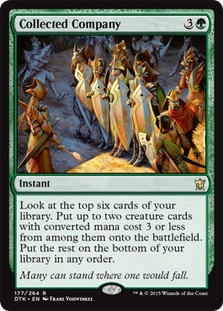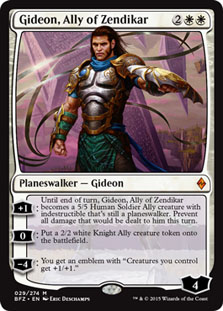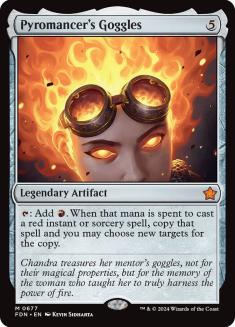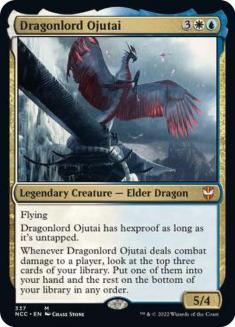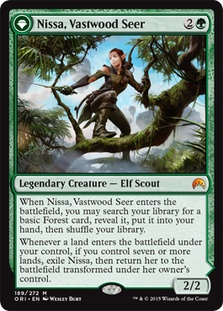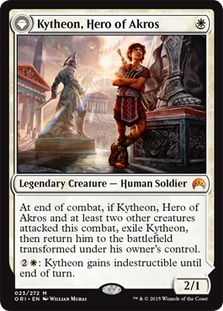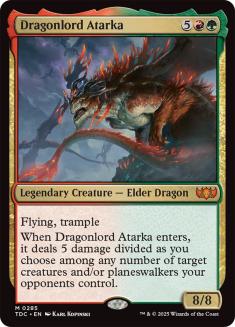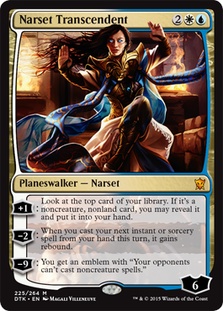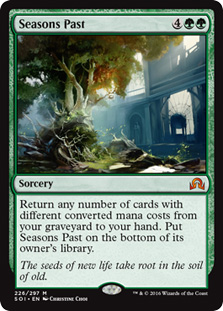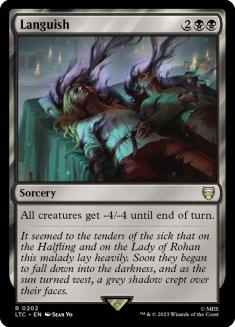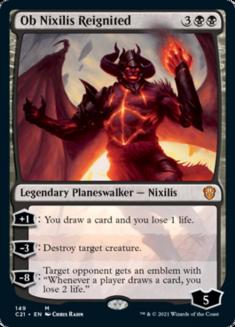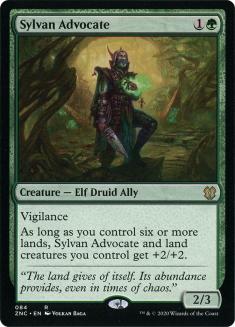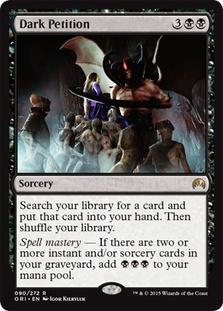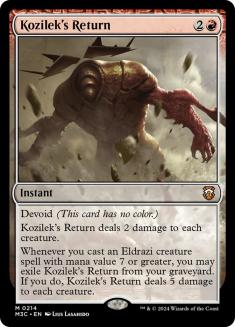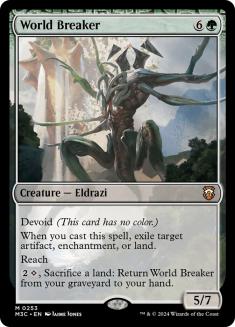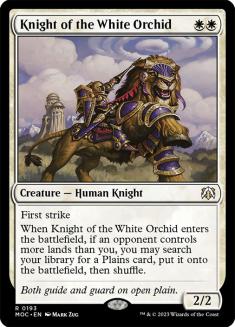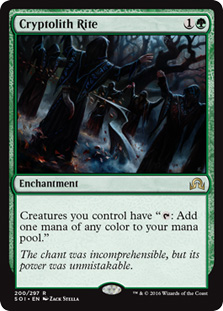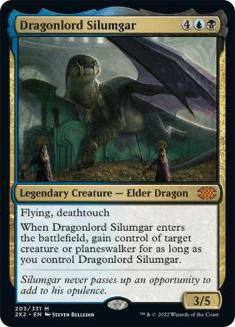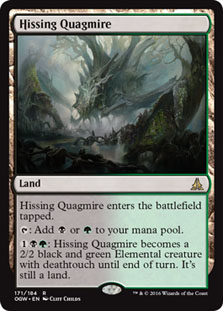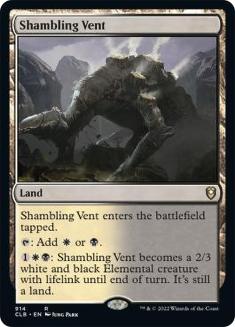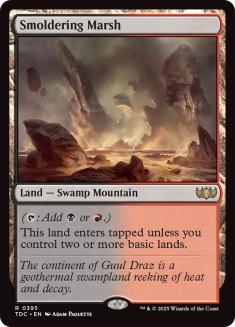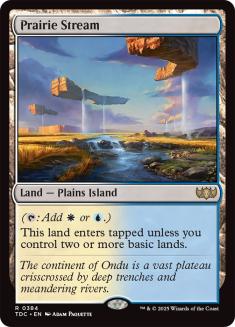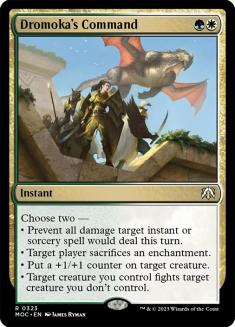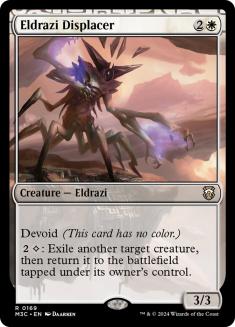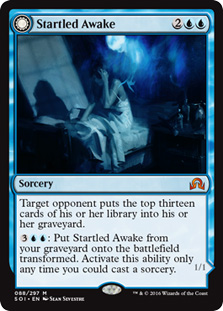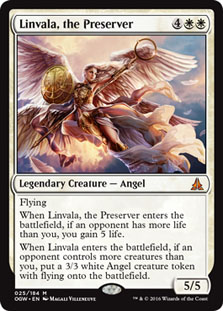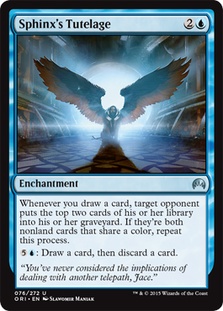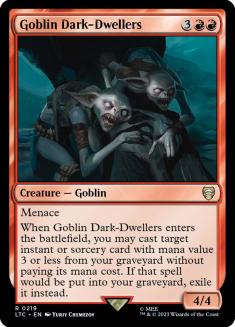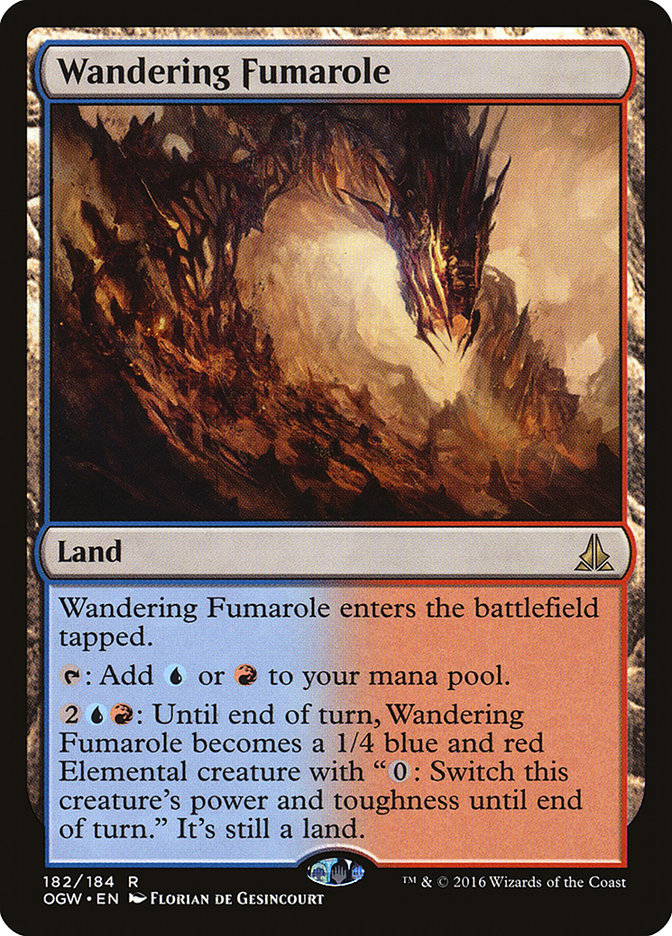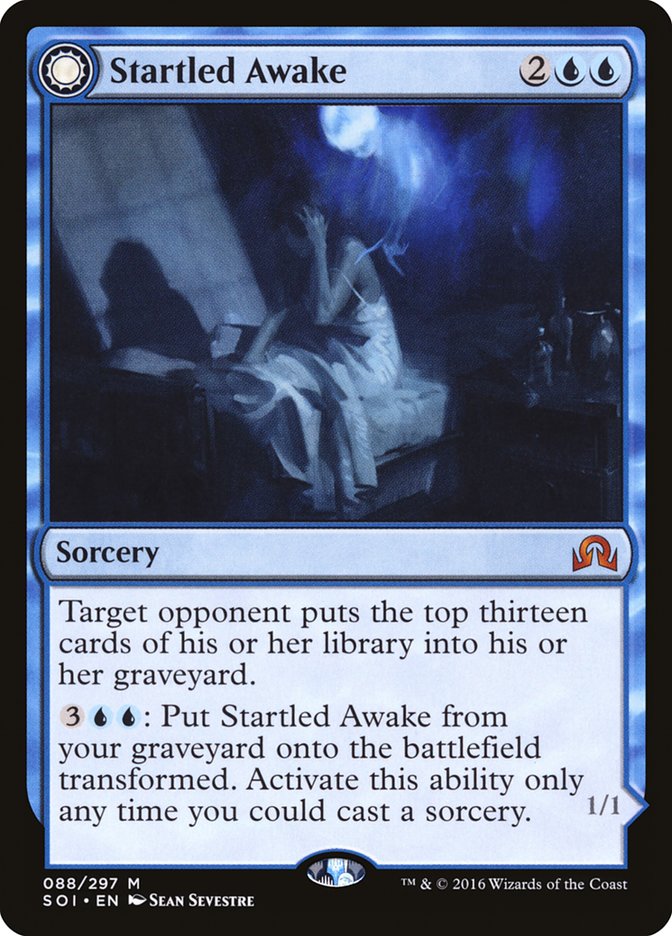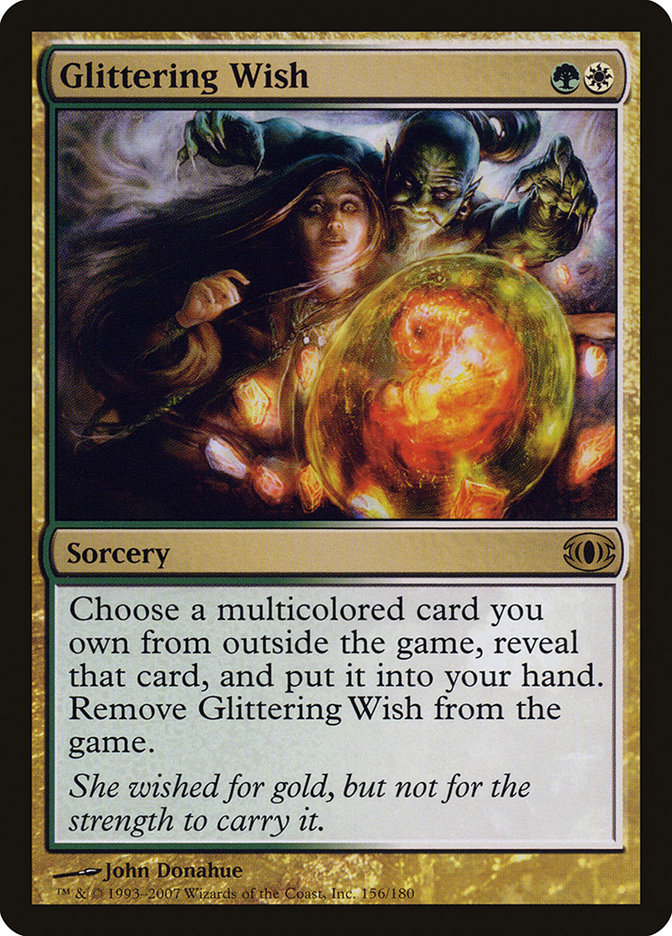It doesn’t take much for the cards to start piling up. A couple of Friday Night Magic drafts, a Prerelease or three, a box opening, a small collection buy, some Sealed Deck testing prior to a Grand Prix, some smart trading, a bad spec buy during a Pro Tour, an impulse purchase at Target…and before you know it, you’ve got stacks of cards on your desk, a closet full of long boxes, and no idea where anything is.
What should you do with all that bulk? It’s worth sorting through, obviously…but how deep do you need to go? Should you try and sell individual commons for a penny apiece? Should you buylist your bulk rares? Should everything else go on eBay, Craigslist, or back into your closet? Grab some protein powder and fire up your blender, because today is all about bulking up.
Raring to Go
Let’s start the conversation by talking about bulk rares.
StarCityGames.com buys bulk rares for $0.10 each on their buylist. Not coincidentally, this is also the price I will also pay for bulk rares. It’s nearly impossible to lose at this rate; I don’t see rares dropping below the $0.10 mark in the foreseeable future, which means that you will always have a way to get your money back out at the price point you paid. There aren’t any lower-risk buys anywhere in Magic. WotC could announce the end of the game tomorrow and the bulk rare price still wouldn’t drop below ten cents each.
At ten cents, every bulk rare is like a low-risk lottery ticket with a tiny shot of paying off big. Hall of Gemstone was a bulk rare a few years back; now it’s worth $8. Same with Stony Silence, currently at $12. We just don’t know which card will spike next.
Certain rares are far more likely to make an impact than others, of course. It would take a miracle for, say, Cerulean Sphinx to become desirable in even the most casual of formats. But there’s no reason to spend time trying to figure this out. You can get $0.10 for Cerulean Sphinx today. You’ll be able to get $0.10 for Cerulean Sphinx tomorrow. Why sell your copy unless you really need that dime?
In fact, I would argue that you should never sell your bulk rares unless you live in a tiny New York City apartment and space is at a major premium. Think of your bulk rares as a bank account that provides modest dividends. Stick them away somewhere and harvest them for recently spiked cards every year or two.
The Sorting Hat
Bulk rares are easy. Even if you have a relatively large collection, you should be able to sort all your bulk rares and stick them into five-row boxes inside of an afternoon. Things don’t get overwhelming until you tackle the rest of the collection, that jungle primeval of commons and uncommons we’ve all been avoiding dealing with for the past several years.
When dealing with bulk, the first and hardest step involves figuring out which of your cards are not bulk. For example, did you know that the Ravnica: City of Guilds common Muddle the Mixture currently has a retail price of $6? You probably knew that Gitaxian Probe wasn’t bulk, but did you know that Blighted Agent is worth two bucks? Or that Spirit Mantle is worth $3? Or that Choke was worth almost $8? How many of these cards do you have sitting in boxes in your closet?
You might be tempted to find a price guide that clearly shows you which commons and uncommons are worth money (I like this one) and keep it up on your computer screen while you sort through your endless stacks of cards. This is a reasonable plan if you’ve only got an afternoon to dig and you just want to find things that are currently expensive. The problem with this method is that you will almost assuredly miss something—my eyes start to glaze over after about an hour—and you will still have boxes of cards clogging up your closet at the end of the day. Eventually, some of those cards will spike to a dollar or two and you’ll be incentivized to repeat the process again, and again, and again.
Sorting all of your cards by expansion is a far better option. It’s going to take you a lot longer if you have thousands of cards. Last summer, I sorted about a hundred thousand cards like this, and it took me several days. Here’s a tip if your collection is too overwhelming for the amount of table space you have: sort by block first (grouping core sets together), then separate each of those stacks out by set during your second pass.
You can sort further than that if you want to, but it isn’t necessary. Sorting by expansion means that if you see a silly old common spike (Muddle the Mixture, say) you can go right to your Ravnica box and look through a couple hundred cards instead of having to paw through tens of thousands of Theros commons. While it would certainly be better to have your cards sorted alphabetically or by rarity and color, the time it will take you to do this is probably not worth it unless you have another reason (collection aesthetics or deckbuilding ease, perhaps?) to do so.
Another reason not to sort your bulk even further? It makes it that much harder to maintain your sort over the long haul. If your cards are sorted alphabetically, you will need to alphabetically sort every single card you acquire from now on if you want to stay organized, a daunting task even for those of us who love putting on a good audiobook and spending an afternoon sorting cards. If your cards are only sorted by expansion, you only have to separate new card acquisitions into simple piles before adding them to your sorted collection.
Once your cards are organized, you’ve got a new challenge ahead: long-term storage. I tend to keep my unsorted cards in USPS flat rate boxes, but storing sorted piles of cards like that is a bad idea. You’ll lose track of where things are, and piles will shift into each other and become unsorted. As with anything in life, entropy tends to win out unless you’re actively fighting against it.
One possible solution? Large five-row boxes with clear, labeled dividers. This is how my collection is currently stored, and it’s very easy for me to find any card I need to within two or three minutes. The problem is that you can run out of space in a given box very fast, and the spillover can create awkward situations. What do you do when you buy a collection that increases your number of Urza’s Saga cards by a factor of four? Shift every other set down a row? Buy a new box? I don’t recommend this method if you regularly acquire large stacks of older cards. It’s perfect if you’re mostly drafting and buying packs from the current set, though.
If you’ve got a large, older collection or you buy a lot of collections, it’s better to buy individual 1,000-count boxes for card storage. Label each one by expansion (or by block if you don’t own a lot of, say, Lorwyn and Morningtide cards) and stack them in your basement or closet. This way, you will always know exactly where everything is and you’ll be able to access your collection with relative ease.
Culling the Weak
Now that you’ve got everything sorted by set, it’s finally time to go digging for value. The StarCityGames.com website will help you out here – go to the Advanced Search, click the checkbox next to the expansion you’re currently looking at, tell it to only display commons and uncommons, and sort by price with the most expensive cards listed first. You’ll find that most cards will neatly separate into three distinct categories:
Cards Worth Selling/Buylisting: Anything over sixty or seventy cents usually has a high enough buylist price to warrant pulling it out. Depending on how large your collection is, you will be tempted to move on from a lot of these cards. After all, do you really need thirteen copies of Wall of Blossoms?
Above Bulk, Below Buylist: Cards in the $0.25-$0.50 range are clearly not bulk, but they generally buylist for a nickel or not at all. These cards are often where the next generation of $2-$3 commons and uncommons are found; they just need a little more time to gain demand.
True Bulk: Limited fodder. Can you imagine a world where Inquisitor’s Ox or Kessig Dire Swine will ever be in demand? I sure can’t.
Some sites will offer a tiny amount for cards like this, maybe a penny each, but that only adds up to $10 per thousand cards not counting shipping costs. Considering the amount of effort that will be required to parse the order—putting every card in alphabetical order, checking condition, packing, shipping, etc.—you’re better off ignoring these sorts of offers. I don’t buylist anything under a nickel, though some folks will go down to three cents if they have the time.
Where should you draw the line on what to keep? It depends on how much time you want to spend working on this project and how much storage space you have. If storage space isn’t an issue and you like looking through cards, keep them all. Sometimes cards that appear to be true bulk break out later, and the more you think about each card the more you’ll start coming up with corner cases where a card like Ghoulcaller’s Accomplice or Vessel of Volatility could eventually see play and then it becomes impossible to draw a line.
If you’d rather keep your collection lean and mean, just use StarCityGames.com prices to make those calls for you. Keep everything that sells above bulk C/U pricing and plan to get rid of the rest. Just don’t kick yourself when some silly card breaks out three years from now and you got rid of your 35 copies for next to nothing.
If you do decide to sell your true bulk, I recommend sidestepping the Magic community entirely. StarCityGames.com pays $3/thousand for bulk cards, which is fairly standard and barely worth the shipping costs. Most local buyers only want unsorted bulk; they’re likely hoping to go through the exact same sort you did in search of cards to buylist or add to their collection. If you have tens of thousands of cards for sale, you might be able to find a local buyer anyway, but most small-time dealers or binder grinders won’t be interested in your 5000-count box of sorted Draft leavings.
My favorite option for getting rid of bulk: hold a yard sale! Advertise on Craigslist that you will have Magic cards available, and put them out along with the rest of your yard sale items. I’ve done this three times, and I’ve been able to get rid of plenty of cards for $10 per thousand each time.
Another option is to donate them to your local shop, school, or community center. Most young kids and new players don’t care if their decks have no monetary value; they just want to experience the game.
What should you do with your non-bulk finds? That depends on how much of an active trader you are. I tend to prefer buylists when I’m trying to get rid of twenty or 30 of something at a single time; there’s just no way that many people in my local area need Zombify, nor are the cards worth selling individually on a platform like eBay where shipping costs will kill you. It’s better to stick the nicer finds—Choke, say—into your trade binder, and send the rest off in one big buylist order. If you’re an active Eternal or Commander player, though, you probably want to keep at least a few copies of each card on hand just in case you end up needing them later.
Buying Bulk
I love buying bulk from other players. As with bulk rares, it’s a low-risk, high-reward deal that just requires a little time and knowledge on your part.
I have four price points I tend to use when buying bulk:
$7/thousand: If I’m getting true virgin bulk from the pre-Return to Ravnica era, I’ll pay $7/thousand. This requires at least a quick look at the cards in person, though—if I’m flipping though and I see Rancor or Heritage Druid or whatever, I’ll make the deal without thinking twice about it because two or three cards will probably pay for the whole thing and the rest will be gravy.
$5/thousand: The figure I tend to use if I’m buying a mix of cards from a local player who I know pulled the valuable cards at one point but there are still likely to be years’ worth of potential spikes or Commander goodies inside.
$3/thousand: My sight-unseen online buy price or cards that I’m willing to take a flier on even if I think there’s a decent shot they’re picked through. Since StarCityGames.com pays this much, it’s hard to lose unless you go too deep.
$0: Don’t forget that the SCG buylist price on bulk doesn’t include shipping, which is significant. Unlike bulk rares, which I’ll always buy at ten cents each, you can lose money buying picked-over bulk at $3/thousand. Don’t be afraid to walk away from a bulk buy if you think there is truly nothing good there.
Where can you buy bulk? You can always ask around your local store. Most players have bulk sitting around that they have no interest in keeping, though make sure you’re not stealing your LGS owner’s business and you may find it hard to deal with casual players. I’ve often found that less competitive players have a harder time understanding that bulk cards are worth so much less than what they paid. Also be wary when buying bulk from players who may have bought large online repack lots; these show up on places like eBay from time to time, and generally include the worst of the worst of the truest bulk.
This Week’s Trends
While Modern prices are relatively stable in the world of paper Magic, MTGO’s Modern index has taken a bit of a dip. This is probably because of the WotC announcement that there will not be a Modern Pro Tour anymore. I talked a little last week about why I don’t think this will be a big deal for Modern prices going forward, but I thought I’d address it again here since there still seems to be a lot of fear and confusion about what will happen to the format now the Modern Pro Tour is no more.
One worry I’ve heard from many different Modern players is that WotC will allow the format to become boring and fallow. What if they take far longer to make necessary ban decisions now that Modern is under less scrutiny? It’s not like the Eldrazi ban was unnecessary. Heck, you can make a good case for the Birthing Pod ban, too; the format was getting really stale toward the end of 2014.
I just can’t see WotC abandoning Modern just because the PT is gone, though. WotC has been reasonably aggressive when managing problems in Legacy, also not a Pro Tour format, and the fact that Modern will still be regularly played at the PPTQ and Grand Prix level gives them plenty of incentives to stay on top of things. Don’t forget: WotC needs Eternal formats to help sell booster packs. People would buy fewer Magic cards if they knew they’d all be worthless after rotation, and everyone at the company is aware of this.
And as to their announcement, it’s not that WotC is hoping to ban things less often because the format is less important and will be allowed to stagnate longer; it’s that they hope they will be able to get away with banning things less often because the best players in the world are no longer incentivized to solve the format every year. Modern will continue to see the same level of care from R&D. They’re just hoping they can be a little more hands-off.
It’s true that some number of people will stop playing Modern now that it’s no longer a PT format. Maybe there’s someone out there who dislikes Modern and was only playing it because they wanted to qualify for that Pro Tour. Maybe someone else only plays Modern for a few weeks each year after getting inspired by the Pro Tour stream. Will these people leaving Modern be enough to cause a price dip? Perhaps, but the overall impact should be less than a single Modern Masters set.
For the rest of us, the incentives and opportunities to learn and play Modern have not changed in the slightest. In fact, the format not being solved every year should lead to a more diverse Modern with fewer deck-wide bans causing people to rage-quit the format. If you like Modern, now seems like a pretty good time to buy cards on Magic Online. I can’t imagine this price drop will be permanent.
Honestly, it’s a great time to trade your Standard cards for Modern staples. If I were you, I’d capitalize on the current fear surrounding Modern as well as the fact that Standard cards are at their seasonal highs. Following the Pro Tour, the following cards saw at least a minor price increase:
The origin of most of these price spikes is clear—check out my post-PT article from last week for a detailed explanation. If you’re holding any of these cards, especially the hot mythics, I’d sell them right away. The farther we get from the Pro Tour, the cheaper Standard will get.
Wandering Fumarole and Startled Awake weren’t featured in the Pro Tour decks, but I can see why they’re spiking a little. The other creature-lands from Oath of the Gatewatch have seen major price increases, so Fumarole is tagging along for the climb. Startled Awake had fallen just a little too far for a top-tier Casual card; mill cards like this are terrific long-term holds, and if demand for this one has already started to climb, it may be time to grab a playset or two at current retail.
I’ve also noticed that the secondary Causal mythic targets from Magic Origins—Starfield of Nyx, Day’s Undoing, Demonic Pact, etc.—have begun trending upward as well. If you’re into long-term speculation, this might be your last chance to buy in.
Glittering Wish has begun trending up again, likely because more people are building this deck. I wouldn’t mind having a set at current retail—as a Future Sight rare, the sky’s the limit here.
Immerwolf from Dark Ascension has started to see some movement thanks to casual Werewolf fans. This is currently a $1.50 uncommon, but I could see it hit $3-$4 by the time Eldritch Moon is released. As soon as the inevitable Werewolf commander is spoiled, all the best Werewolf foils will spike, too. I’d snag them now if you’re planning on building the deck.
The foil version of Glacial Chasm from From the Vault: Realms spiked, probably due to people building Commander decks with The Gitrog Monster. Some Redditors are calling Lake of the Dead as the next Gitrog-related spike, and they’re probably right as these things tend to be self-perpetuating. I’m still not rushing out to buy a stack of them, though.
Wheel of Sun and Moon spiked last week as well, mostly because there was a lot of discussion in the finance community about how well-positioned the card seems in the current Modern metagame. This seems theoretically sound to me, but right now the hype is all on the finance side of the game, a dubious distinction for the card’s competitive future. I’m a seller at current retail.


